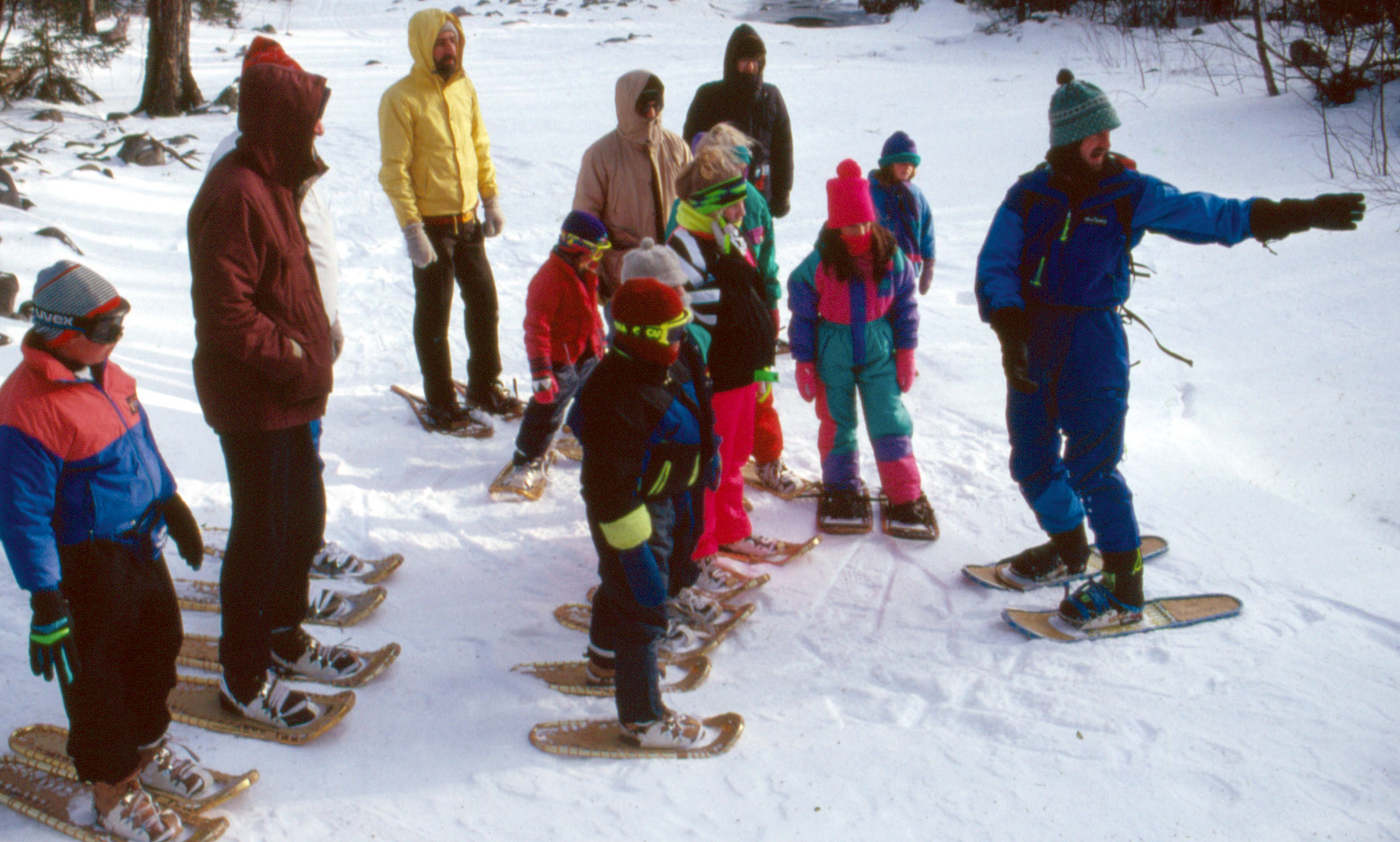Keeping Kids Active During Winter
My Dad Friend from work sent me the first link to Back Country Skiing and in doing so, I discovered this great blog by a Harvard Mom who now writes this blog for the Appalachian Mountain Club for kids while pursuing her love of rock climbing and backcountry skiing. Winter is starting to drag on here at our house, so this is my pep talk to myself to embrace winter by trying something new. Our older kids tried snowboarding for the first time and we got our youngest on a snow tube (he loved it!), skis (he liked it!), and ice skates (he hates it!).
To mix it up, here are some ideas for keeping kids (and adults) moving during the slush and snow of a New England winter! I think my husband and I are going to try cross country skiing, and maybe we can get the kids to join us! We heard Weston Country Club is a great place for lessons and a nice, smooth track.
p.s. If you like this post, you might like How To: Keep Kids Active During Winter
p.p.s. Photo by Dad Friend, Jerry Shereda. He does gorgeous architectural and portrait photography.
1) 40 Great Places to Sled in Boston, courtesy of Boston Globe Staff.
Flagstaff Hill on Boston Common (near the baseball diamond)
The Bowl in Boston next to Jamaica Pond
Larz Anderson Park in Brookline offers both huge and more modest hills and parking.
Weld Hill at Arnold Arboretum, corner of Walter and South streets in Roslindale with parking on South Street and various side streets.
Cory Hill Park in Brookline
Dorchester Park off Adams Street in Dorchester
Spy Pond Park in Arlington
Oakley Country Club in Belmont
Prospect Hill Park in Waltham which features some long runs.
Tufts in Medford. A nice hill in the back of the school.
Elm Hill Preservation off Route 16 at Wellesley/Natick border
Severance Hill at Wellesley College behind Davis Museum
Warren Park at Wellesley Rec Dept, Route 16 Washington St
Schofield Elementary School, Park at 27 Cedar St. in Wellesley
Kelly Memorial Field om Elmwood Road adjacent to Bates Elementary in Wellesley
Hillview Country Club on North Street in North Reading
Mount Hood Golf Course in Melrose
Glendale Park in Everett
Seven Bump Hill in Malden
Cable Hill in Ipswich
Jericho Hills, Brigham off Clover Hill Rd, off Forest in Marlborough
DeNormandie Dairy Farm in Trapelo Road in Lincoln
Mount Hood in Melrose
Lynch Park in Beverly
Dane Street Beach in Beverly
Wheatlands Hill in Topsfield
Benjamin Hill on Benjamin Road in Acton
Woodsom Farm on in Amesbury
Norfolk Golf Club in Westwood
Pete’s Hill in Sharon, located near Sharon center.
South Shore Country Club in Hingham
Coast Guard Hill in Marshfield
Gaffield Park in Norwell
First Parish in Norwell
D.W. Field in Brockton
Borderland State Park in Easton/Sharon (behind the Ames mansion)
Ponkapoag Golf Course in Canton
Higashi School in Randolph
Furnace Brook Golf Course in Quincy
Scituate Country Club in Scituate
Strawberry Valley Golf Course in Abington
Coakley Middle School, Norwood
2) Snowshoeing for Kids (from AMC’s Great Kids, Great Outdoors Appalachian Mountain Club)
Play games:
Rabbits and coyotes.” Have you ever watched a rabbit run through the snow?” Silverberg asks. Their big back feet hit the ground farther forward than their smaller front feet. The Silverbergs helped kids place their mittened hands together slightly in front of their bodies, mimicking a rabbit’s front paws, and their snowshoe-clad feet on the outside of their “paws.” The adults encouraged the children to jump forward onto their hands and to see if they could push off with their “hind” legs so they landed with their snowshoes slightly forward of their mittens. It might take a few tries to get the rhythm, Silverberg says, but several good bunny hops will look just like giant rabbit tracks.
Coyotes, on the other paw, are straight-line walkers, putting front and back feet on each side into the same track. The Silverbergs had kids hunch over and simulate how coyotes walk through the snow by having them cover the print that a mittened hand makes with the snowshoe on the same side. “If they do it well,” Silverberg says, “the snowshoes will completely cover the handprints.”
Tell outdoor stories. On troop outings, the leaders looked for ways to engage the girls through stories. “I was always asking, ‘What happened here?'” Silverberg says. Even the snow-laden branches of a fir-tree could turn into an exploratory story, with the troop crawling under the boughs and noticing how the tree became a cozy emergency shelter. The Silverberg’s pointed out feathers and fur on the snow and other animal tracks, winter plants, ice, and snow patterns. “You don’t have to know what it is,” Silverberg counsels adults. “You just have to notice.”
Map winter. With leaves gone, winter is a great season for views. The Silverbergs brought maps on every trip as a matter of course. The group often stopped where they had a view to match the landscape and the map. Even highway maps can be used for this purpose.
Stay close to home. In the Silverbergs’ experience, it’s best with younger children to plan snowshoe outings close to home. “Even if they’re dressed perfectly for the weather,” Silverberg says, “you just don’t want to be too very far from hot chocolate.”
Visit old friends. After just a couple of years, the Silverberg girls and their friends were experienced snow-walkers. At that point, the troops’ co-leaders added to the adventure by taking the girls back to trails they’d hiked in the summer. “I’d hear them talking about how different the trail looked in winter,” Silverberg says. “They’d just be amazed the entire time.” Snowshoeing, he notes, is one of the easiest and least expensive ways to enjoy winter in the Northeast. Children’s snowshoes work well for all but the most serious winter backpacking trips. Rentals are widely available or consider buying used.
3) Cross Country Skiing for Kids (from AMC’s Great Kids, Great Outdoors Appalachian Mountain Club)
Further tips for bringing up happy Nordic skiers:
It’s only fun if it’s fun. After his first child was born, Goodman started asking other skiing parents how they got their kids on skis. One skiing mom told him, “It’s only fun if it’s fun”—advice Goodman has heeded. If kids have fun skiing, they’ll want to do it again. If they associate it with being cold and miserable, they’ll want to avoid it.
Keep it short. “You have to go their pace,” says Milliken. “It’s hard for me to do—I want to get my workout in—but understanding that is key to getting kids to come back.” Goodman characterizes early ski outings with his children as “what you do between having hot chocolate.”
Keep it simple. “Cross-country skiing is one of the most accessible sports,” says NENSA’s Abby Weissman. “Kids can just go out in their backyards. They don’t need to go to cross-country ski centers to ski.” Loops around the backyard add up, too: NENSA’s web-based “Ski for Ks” rewards program lets young skiers track their cumulative mileage online.
Keep costs down. Nordic skiing isn’t as expensive as downhill skiing, but the gear can be costly, and choosing among options can be intimidating. Communities with ski programs often hold ski swaps and support retail stores that rent equipment. NENSA has worked in recent years to lower the cost barrier, creating a ski-lease program for its members. Cross-country ski centers often rent gear as well.
Bring other kids along. “You may think it’s romantic to go out on the trails with your family alone,” says Milliken, “but it usually works better if two or more families go out together. Kids like having buddies, and they whine less when other kids are around.”
Mix it up. In the Ford Sayre program, Milliken may spend half a practice with his younger skiers simply playing on a downhill slope. “Kids get excited about going down the hill,” he says, “and they don’t really notice that they’re also herringboning back up the hill.” They’re practicing an important cross-country skill, but it feels like fun. If a ski starts to feel like a slog, set up timed or relay races along short stretches. Ask kids to see how far they can glide using only one ski. Makeup treasure hunts on the fly. Do it together. “There aren’t many sports that you can share together as a family, across the generations,” Milliken says. “My father is 81 years old, and he and I still ski together.”
4) 8 Teen Approved Back Country Skiing (from AMC’s Great Kids, Great Outdoors Appalachian Mountain Club)
Stratton Pond, Catamount Trail, Vermont. 7.8 miles. Starting elevation: 2,218. Vertical drop: 525 feet. If it weren’t for the pond — “kids like destinations,” Goodman says — this gentle ski tour through “an unspoiled pocket of the wild country” on the undeveloped west side of Stratton Mountain Ski Area might not get the kids’ seal of approval. On moderate backcountry trails without a lot of steep uphill or downhill, such as this showcase section of the Catamount Trail, Goodman suggests using lighter touring gear. Goodman describes the Stratton Pond trail in “Skiing the Classics” (AMC Outdoors, November/December 2010).
Greeley Ponds, Kancamagus Highway, New Hampshire. 4.4 miles. Starting elevation: 1,800. Vertical drop: 445 feet. “I’m a big fan of mountain ponds,” says Goodman — and few ponds come with as a dramatic backdrop as the two Greeley Ponds. Skiers emerge from dark green woods to breathtaking views of cliffs and ice chutes on the east face of Mount Osceola.
Avalanche Brook Trail, Pinkham Notch, New Hampshire. 6.2 miles one way. Starting elevation: 2,022. Vertical drop: 1,450 feet. This trail isn’t exactly deep backcountry, as it traces close to Route 16 for its entire length. But it does travel through mixed forests and a variety of interesting terrain. Follow it north to south, starting at the Gulf of Slides trailhead south of Pinkham Notch Visitor Center, for a thrilling 2.5 downhill run. It may be easiest to drop a car at the Rocky Branch parking lot, where this trail ends, and hitch to the start.
John Sherburne Ski Trail, Mt. Washington, New Hampshire. 4.8 miles. Starting elevation: 2,022. Vertical drop: 1,928 feet. The approach trail to Tuckerman Ravine is an excellent introduction to backcountry down-mountain skiing. The trail steepens over its two uphill miles from the AMC Pinkham Notch Visitor Center to just above the Hermit Lake shelters and offers plenty of thrills on the way back down.
Wildcat Valley Trail, Jackson, New Hampshire. 8 miles one way to Dana Place Inn on NH 16. Starting elevation: 4,062. Vertical drop: 3,000 feet. The 3,000-foot descent off the backside of Wildcat Ski Area is one of the most popular backcountry skis in New England. The best way to ski the trail is to take the Wildcat Express Quad to the top of the mountain. Even with the gift of a motorized ascent, the Wildcat Valley Trail remains a serious backcountry route, with steep slopes and sometimes icy conditions. It also requires a solution for getting back to the ski area once you reach the road. (Most backcountry skiers stick out a thumb and hitchhike back.)
Mt. Cardigan, Alexandria, New Hampshire. The eastern slopes of Mt. Cardigan offer a splendid variety of trails — ski classics cut in the 1930s by AMC volunteers and CCC trail crews and still some of the best down-mountain ski trails in the Northeast. The gentle slopes of Duke’s Pasture, uphill from AMC’s Cardigan Lodge, are a perfect practice area. Above the pasture, Duke’s Trail continues up through old hardwoods, with plenty of room for traversing turns on the way back down. A rolling 5-mile tour heads out from the lodge on the 93Z trail. Come with gear; Cardigan Lodge has no rentals. Goodman describes Cardigan trails in “Skiing the Classics” (AMC Outdoors, November/December 2010).
Jackson Ski Touring, New Hampshire; Trapp Family Lodge, Vermont. Let’s say you’re planning a ski trip weeks or even months in advance, Goodman says. “The thing about backcountry skiing: This could be the weekend the backcountry stinks.” Two reasonable bail-out options are the groomed ski trails in Jackson, New Hampshire, and out of Trapp Family Lodge in Stowe, Vermont. The world’s not a bad place when your backups offer world-class cross-country skiing and fine backcountry options if conditions improve.
A final word to families who already enjoy downhill skiing with their kids: Several downhill ski areas in New England feature “off-piste” or glade skiing. Two areas famous for their backcountry are Jay Peak in northern Vermont and Mad River Glen in the heart of the Green Mountains.
4) Snow shoveling. We bought these snow shovels from the Montessori catalog and they are great. I prefer them over the big, huge adult ones. My kids (sometimes) love to shovel but we find that we need their assistance when we get a big dump because they do the stairs that the snowblower can’t do.
5) Snow Fort/Snow Cave. We were cursing the city snow plowers the other day after we cleared a 4-foot mountain of snow off the end of our driveway (and it was 4-foot square!) but the kids delighted in then carving out a snow cave from the huge piles on either side of the driveway. They were content for hours and built a snow cave large enough to hide in. My middle daughter requested the claw foot hammer to carve out more ice at one point. No actual snowball fights ensued but whoever had the fort would have a clear advantage!
6) Snow Igloo. We haven’t tried to build an igloo but let me know if you do and please send a photo! It looks hard to do. Are there any structural engineers out there? Or architects?
To examine any of the items listed, please click on image of item. As an Amazon Associate, I earn from qualifying purchases.
BEST #OWNVOICES CHILDREN’S BOOKS: My Favorite Diversity Books for Kids Ages 1-12 is a book that I created to highlight books written by authors who share the same marginalized identity as the characters in their books.










Though living on the other side of the country, it’s fun to read of interesting winter places in your neck of the woods and to daydream about them. I recently learned how to say “Appalachian” correctly, and am happy about that.
To Jeri,
Thanks for reading about winter activities to keep kids active even though it sounds like you get sunshine year round!
With winter weather fast approaching thanks for this great list to inspire us! Thanks for linking to the outdoor play party. Cheers.
Hi Jen,
Thank you for setting up the linky party! Nice to meet you!
What a detailed list suggestions to keep the family moving all winter! Your children are blessed to have a mom so dedicated to finding awesome ways to pass the winter months! Thanks for linking up the Outdoor Play Party!
Hi Jackie,
Thank you so much for hosting the link up and for taking the time to come to my blog to leave a comment! I really appreciate that! Not loving the cold, we struggle to keep our kids active during the winter here in New England so I made that list for purely selfish reasons!
I love snow tube and ice skates but i don’t try. You suggestion inspire us! Great post.
Thanks Allin! Snow tubing is fun!